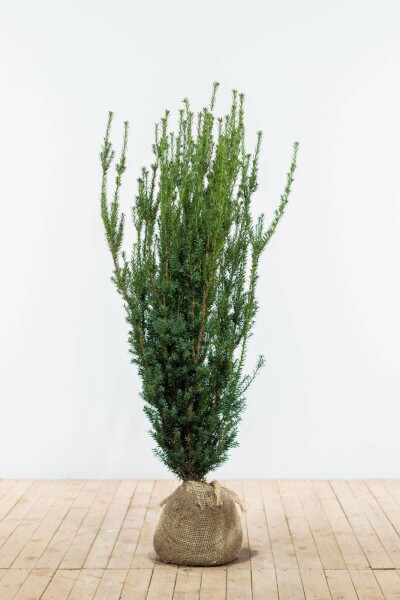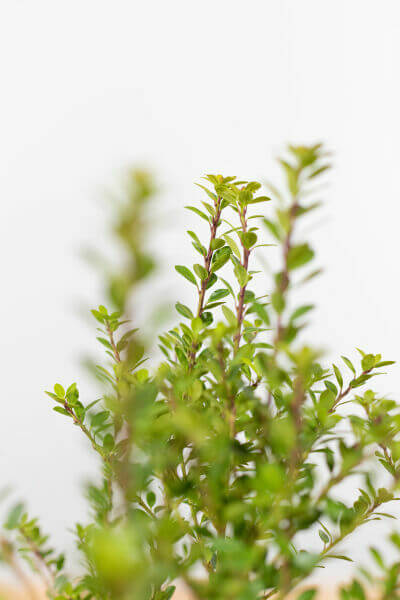Best Hedging Plants For Fall Foliage
Best Hedging Plants For Fall Foliage
Blog Article
Best Hedging Plants For Decorative Hedges
Improve your garden's appeal with lavish hedge varieties such as Yew (Taxus), Thuja, Laurel, Photinia, and Bamboo, commemorated for their structural integrity and ecological advantages.
Yew and Thuja provide evergreen protection and winter season durability, while Laurel uses rapid growth and broad, aromatic leaves.
Photinia adds seasonal appeal with its lively red foliage, and Bamboo lends a low-maintenance, peaceful atmosphere.
These hedges improve air quality, decrease sound, and create tranquil, private areas.
Correct planting, spacing, and maintenance guarantee energetic development and environmental consistency.
Explore how these rich ranges can raise your garden's beauty and well-being.
Key Takeaways
Change Your Garden With Lush Hedge Varieties
- Select Yew for its thick, evergreen development and unrivaled longevity.
- Select Laurel for its quick development and broad leaves, ensuring quick privacy.
- Select Photinia for its lively seasonal foliage, which turns a striking dark red.
- Use Bamboo for a low-maintenance, winter-hardy hedge with visual appeal.
- Space plants 2-3 per meter and prune routinely for ideal growth and health.
Popular Hedge Plants
When changing a garden with rich hedge ranges, it's important to consider popular hedge plants such as Yew, Thuja, Laurel, and Photinia due to their unique characteristics and advantages.
Yew (Taxus) is extremely respected for its durability and dense, green growth, making it a prime choice for withstanding landscapes.
Thuja is noted for its evergreen foliage and robust winter season durability.
Photinia adds seasonal vibrancy with red leaves that darken gradually, producing dynamic visual appeal.
Laurel provides fast growth and fragrant, broad leaves, suitable for quick privacy.
Additionally, Bamboo is an outstanding choice for ambiance, using a low-maintenance, winter-hardy alternative that improves the garden's aesthetic with its elegant, swaying canes.
These choices deal with a range of horticultural needs and preferences.
Advantages of Garden Hedges
Garden hedges provide a wide variety of benefits, making them a valuable addition to any landscape. These natural barriers are affordable to implement and provide substantial wind security, enhancing air blood circulation and adding to noise decrease. The dense foliage of hedges like Thuja and Beech ensures personal privacy by blocking visibility, developing a peaceful and secluded environment.
Hedges likewise play an essential function in microclimate policy, supplying a stable environment that cultivates plant growth and minimizes temperature level fluctuations. Their complex leaf structures filter pollutants, enhancing air quality and contributing to a healthier garden environment.
Furthermore, hedges master noise decrease, soaking up and deflecting sound waves to lower ambient sound levels. This dual functionality of supplying both visual and acoustic personal privacy enhances the general harmony and aesthetic appeal of any garden.
Planting and Maintenance Tips
For an effective hedge, meticulous preparation of the planting area is important. Ensure the soil has appropriate pH and drain to support strong root development.
Space the plants properly for the picked types. Water the hedge regularly throughout its preliminary development phase, adjusting as needed with seasonal changes.
Execute a systematic pest control and illness avoidance technique, using organic or chemical treatments when needed. Regularly inspect for aphids, termites, and fungal infections.
Apply mulch to retain wetness and suppress weeds. Seasonal pruning promotes dense development and air blood circulation, important for plant health.
Following these standards will assist you cultivate a vibrant, well-kept hedge that improves the appeal of your garden.
Spacing and Cutting Standards
Spacing and Cutting Standards
Proper spacing and cutting are essential for cultivating healthy, visually appealing hedges. Sufficient spacing guarantees each plant gets adequate nutrients, light, and air flow.
Follow these guidelines for optimal hedge maintenance:
- Spacing: Position hedge plants 2-3 plants per meter to encourage robust growth.
- Pruning Techniques: Regular pruning is essential for maintaining wanted hedge height and shape. Cut brand-new development in summertime and cut back older wood during winter.
- Seasonal Care: Adjust trimming approaches and schedules according to seasonal requirements to make sure plant health.
- Hedge Height: Routinely screen and trim to maintain the wanted hedge height and achieve uniform aesthetics.
Sticking to these steps will guarantee your hedge grows, improving both the appeal and functionality of your garden.
Choosing the Right Hedge
Picking the Right Hedge
Choosing the appropriate hedge involves evaluating aspects such as mature height, foliage density, and environmental strength. Successful hedge plant choice requires understanding each types' development attributes and site-specific versatility.
For instance, Yew (Taxus) uses excellent durability and dense development, while Thuja is noteworthy for its winter season durability. Additionally, thinking about maintenance requirements is important; fast-growing species like Laurel or Privet need regular cutting, whereas low-maintenance options like Bamboo or Ivy may be more effective for those seeking very little upkeep.
Ecological factors such as soil type, light schedule, and wetness conditions must likewise guide the choice process. This mindful approach guarantees the chosen hedges will prosper, supplying both functional and visual benefits to the garden landscape.
Delivery and Planting Suggestions
To ensure your hedge plants prosper, they need to be delivered by specialized couriers and planted promptly upon arrival.
Follow these vital actions for effective planting:
- Soil Preparation: Improve the soil with organic matter to enhance drain and nutrient content.
- Planting Depth: Create a trench twice the width and equivalent to the depth of the root ball.
- Watering Methods: Water completely after planting, keeping the soil consistently moist however not saturated.
- Mulching: Use a layer of mulch to keep wetness and reduce weeds.
Customer Support and Service
Provided the important role of prompt help in horticultural pursuits, our customer support team is available six days a week through telephone, email, and social networks to use expert advice and swiftly deal with any issues. Their commitment to fast action times guarantees consumer fulfillment by resolving queries related to plant health, optimal planting methods, and upkeep schedules.

Response Time
-----------------
This comprehensive support system, strengthened by an excellent 9.3/ 10 consumer rating, highlights our commitment to improving the gardening experience for each client.
Frequently Asked Questions
For How Long Does It Take for Hedge Plants to Establish?
Hedge plants typically require one to here three years to become completely established, with the precise duration varying by species and growing conditions.
Reliable care during this critical period is essential for robust growth. Consistent watering, vigilant weed control, and appropriate fertilizer application are pivotal in promoting strong root development.
For instance, fast-growing types like Laurel might establish faster, while slower-growing ranges such as Yew may take longer. Thorough upkeep speeds up the establishment process, resulting in thick and healthy hedges.
What Are the Finest Hedge Plants for Privacy?
The question of the very best hedge plants for privacy involves examining evergreen and deciduous options.
Evergreen hedges like Thuja, Laurel, and Cypress offer year-round coverage, ensuring constant privacy.
In contrast, deciduous hedges such as Beech use seasonal personal privacy, shedding leaves in chillier months.
Key upkeep ideas for privacy hedges consist of regular trimming, fertilizing in spring, and correct spacing-- usually 2 to 3 plants per meter.
In addition, constant watering and persistent weed elimination are essential for promoting healthy, thick development.
Can Hedge Plants Bring In Wildlife to My Garden?
Yes, hedge plants can draw in wildlife to your garden by providing necessary benefits like shelter, food, and nesting websites, consequently enhancing regional biodiversity. Yew, holly, and laurel are excellent for drawing in birds, while ivy supports a range of insects.
Nevertheless, it is very important to keep in mind that there are some drawbacks, such as increased upkeep to manage insects and regular upkeep. Thoroughly choosing and keeping hedge varieties can assist stabilize these benefits and downsides, eventually fostering a dynamic and sustainable ecosystem in your garden.
Exist Any Blooming Hedge Plants Available?
Yes, there are flowering hedge plants available that can improve the appeal of your garden.
For instance, Elaeagnus, also called Olive Willow, produces aromatic white flowers in the fall, including a touch of elegance.
Photinia, another popular choice, showcases lively red leaves that grow into a rich green, producing a vibrant visual result throughout the seasons.
To make sure these plants thrive, it's important to practice correct pruning strategies and seasonal upkeep, such as trimming new growth in the summertime and cutting back in the winter.
These steps will assist keep the health and visual appeal of your blooming hedges.
How Do I Avoid Bugs in My Hedge Plants?
To avoid bugs in hedge plants, employ natural insect control techniques and preserve appropriate hedge care. Present beneficial insects like ladybugs, which prey on damaging pests, to create a well balanced environment.
Frequently examine your hedges for indications of invasion and promptly remove any afflicted parts to avoid the spread. Make sure the health of your hedges by using balanced fertilizers and offering adequate water.
Utilize mulching to retain soil wetness and proper spacing to reduce plant tension and promote robust development. These practices jointly help in reducing pest concerns and keeping a healthy hedge.
Conclusion
In essence, selecting the right hedge varieties such as Yew, Thuja, and Laurel can change any garden into a relaxing haven. These plants supply year-round plant, improve aesthetic appeal, and deal practical benefits like sound decrease and wind security.
Proper planting strategies, precise spacing, consistent watering, and seasonal cutting are crucial for optimal development.
Trusted shipment services and expert consumer support make sure a seamless experience from purchase to planting, making it simpler than ever to raise your outdoor area.
Garden hedges offer a multitude of advantages, making them a valuable addition to any landscape. These natural barriers are cost-efficient to implement and offer significant wind defense, enhancing air blood circulation and contributing to noise decrease. The dense foliage of hedges like Thuja and Beech guarantees personal privacy by obstructing presence, creating a secluded and tranquil environment.

Pruning Techniques: Routine pruning is necessary for preserving desired hedge height and shape. Cut brand-new growth in summer season and cut back older wood throughout winter.
Report this page